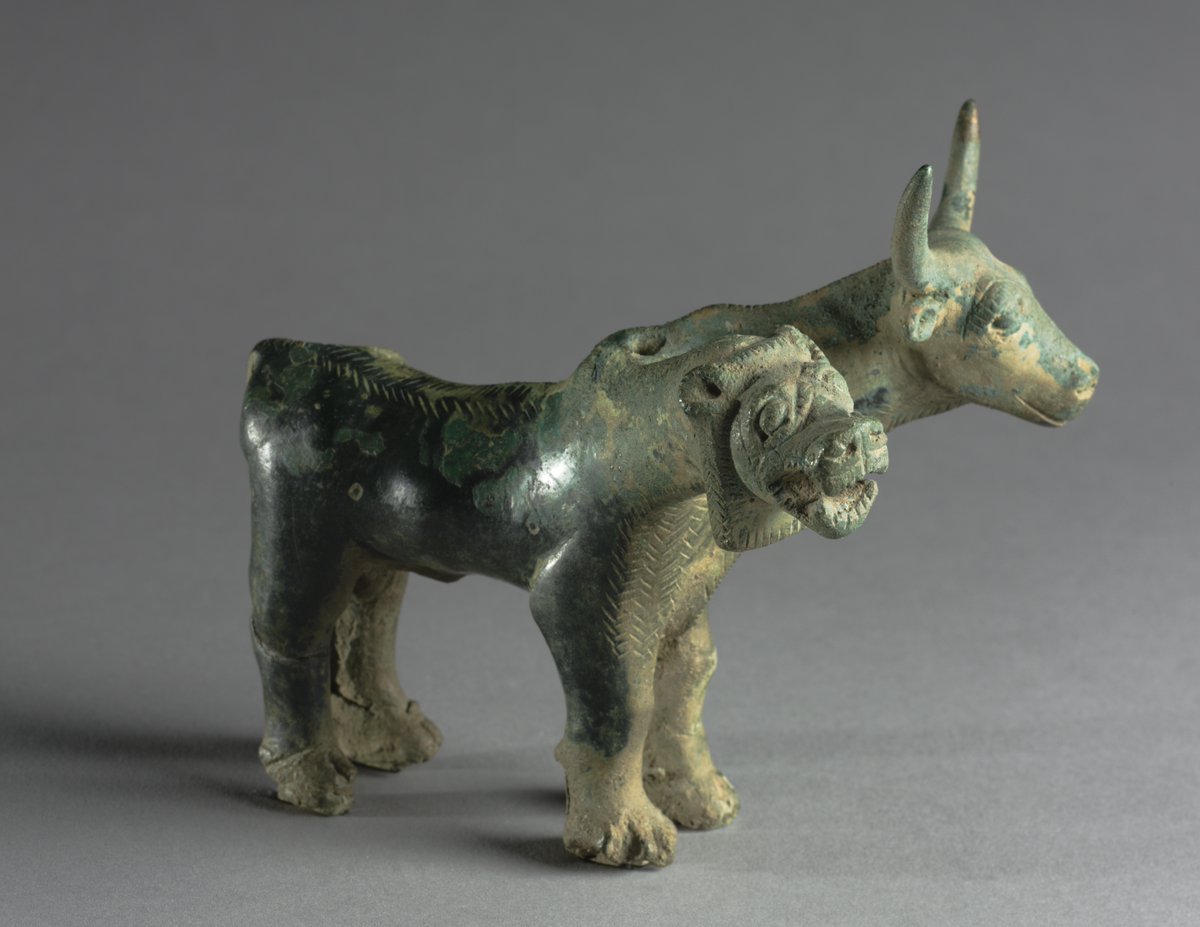Thread: This is truly incredible object. Composite #Lion and Bull, bronze, Iran, 1500-1000 BC. clevelandart.org/art/1969.122 The meaning of this object is unknown. It is presumed that it has served as an object of worship in a temple or shrine...Worship of who? Who else. The beast. 🙂 

The beast in this case is the hot, dry season, which in Mesopotamia starts at the beginning of May, beginning of summer and ends at the end of October. 

It spans summer (symbolised by bull) and autumn (symbolised by lion). I talked about the animal symbols of the seasons in this article:
oldeuropeanculture.blogspot.com/2019/10/symbol…
oldeuropeanculture.blogspot.com/2019/10/symbol…

The dry season in Mesopotamia is the season of drought and death...Completely dominated by the blazing summer and autumn sun....The god of death: Nergal...
And the hottest and driest part of the dry at the moment when bull meets lion. At the end of summer, beginning of autumn. This moment is "marked" by all those "lion killing bull" images, like this one from Persepolis...Lion (autumn) killing (ending) Bull (summer)... 

This is the lair of the fire breathing dragon... oldeuropeanculture.blogspot.com/2020/06/is-tha… The seat of the beast... 

This Iranian two headed figurine is showing us that Bull (summer) and Lion (autumn) are just two phases of the dry season which follow each other...They are just calendar markers...
• • •
Missing some Tweet in this thread? You can try to
force a refresh























